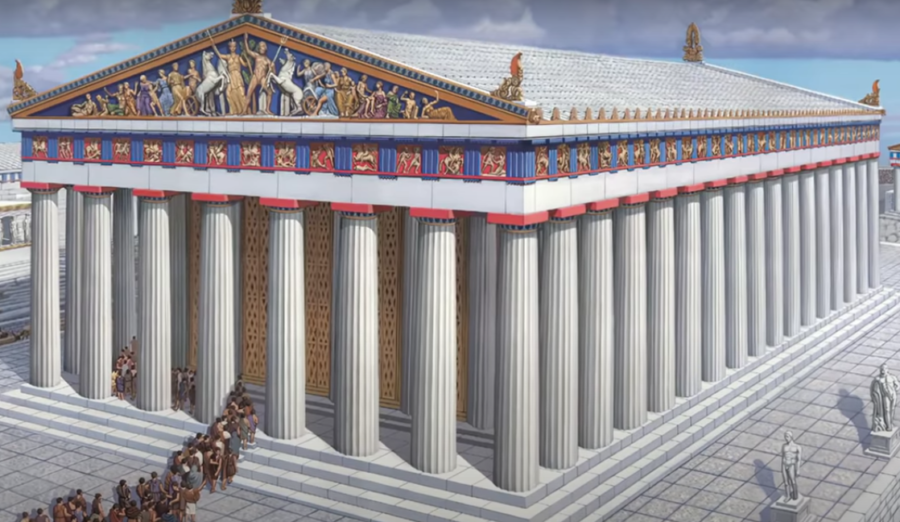Watch this amazing video that shows the artists’ rendition of various archaeological sites such as Machu Picchu, the Colossus of Rhodes, Hadrian’s Wall and more
The following written content from Colin Marshal

Ruin tourism has a long and prestigious history, of course, but it also has the undesirable side effect of subconsciously convincing us that our ancient forebears lived amid a more shambolic built environment than they really did. To see these ruins as they were before their ruination demands a strong imagination.
The video above, which presents artistic reconstructions of such still-frequented sites as Pompeii, Machu Picchu, Chichen Itza, the Parthenon, and the Great Pyramid of Giza. You can still see some these structures for yourself, of course, albeit only now that the ravages of time — as well as those of various plunderers, scavengers, and institutions — have taken their terrible toll.
(The food hall of Nero’s palace still stands, but the water-powered rotation system that made it history’s first revolving restaurant has long since gone out of order.) Others of them nobody has seen since antiquity itself: the Colossus of Rhodes once stood a hundred feet tall over that Greek island, but it only did so for 54 years until its toppling by an Earthquake in 226 BC.
Yet over the two-and-a-quarter millennia since, the Colossus has come to take on much greater proportions in our minds. “The famous imagery of it straddling the harbor,” says the video, only “came about centuries later, and was touted by historians in the Middle Ages who had never seen the monument.
The harbor itself is almost the same width as an American football field, so to be proportionally accurate, the statue would have to stand a stupendous 1,640 feet tall. This was firmly impossible at the time.” Even today, nowhere on Earth boasts a statue that’s so much as half that size. And indeed, this may constitute the enduring appeal of ruins: however glorious they would have been when whole, their worn, discolored fragments fire our imaginations to much greater heights. Read more from OpenCulture





